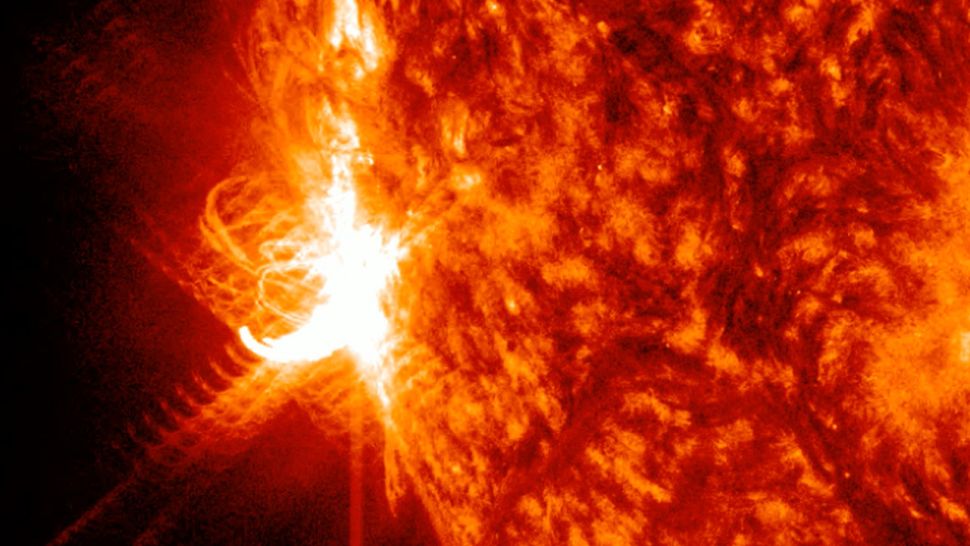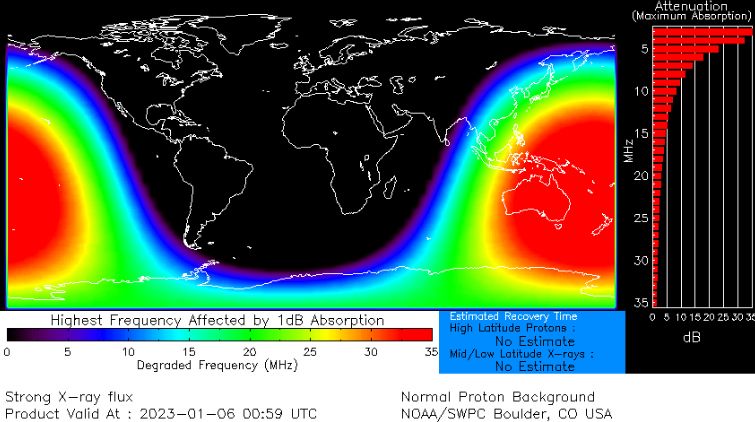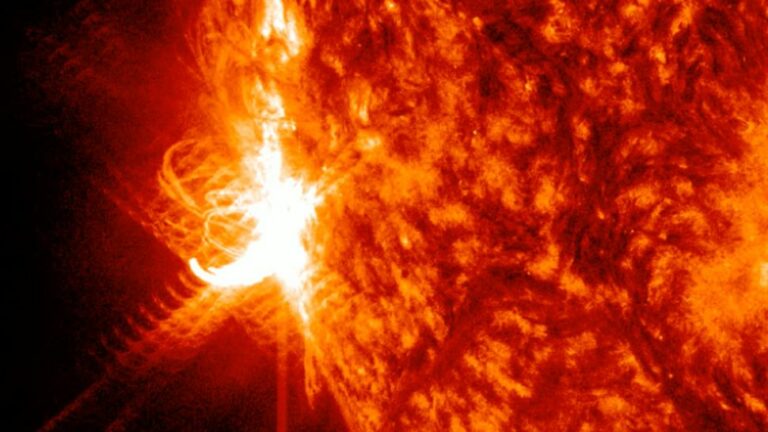As it rotates to face Earth, a previously undetected sunspot releases a massive X-class solar flare.
The volatile sunspot might not be finished yet.
Shortwave radio blackouts were sparked over the South Pacific by a massive X-class solar flare that was released by a newly discovered sunspot.
On January 5 at 7:45 p.m. Eastern Standard Time, NASA’s Solar Dynamics Observatory captured a significant solar flare (0045 GMT on Jan. 6). According to Spaceweather.com, the outburst created a bright, hot plasma dome that persisted over sunspot AR3182 for more than an hour. The active sunspot will shortly face Earth due to the sun’s spin and may continue its explosive activity in the coming days.
By size, solar flares are divided into lettered classes, with X-class being the strongest. The relative power of a flare is indicated within each class by a number from 1 to 10 (and beyond, for X-class flares). The most recent flare registered at X1.2, making it a rather weak representative of the strongest class.
The strong eruption on Tuesday, January 3, which sent a coronal mass ejection (CME), a huge cloud of magnetized plasma, into space, has also been connected to AR3182. The eruption did not endanger Earth since the sunspot at the time was concealed on the other side of the sun.

When magnetic energy accumulates in the solar atmosphere, it is released as a powerful flash of electromagnetic radiation, which is what causes solar flares. The side of Earth facing the sun at the time of the eruption may experience modest to significant radio blackouts as a result of stronger M-class and X-class flares.
This is precisely what happened when a powerful pulse of X-rays and very ultraviolet light was sent at Earth by the recent X1.2 class solar flare. The radiation, which traveled to Earth in less than eight minutes at the speed of light, ionized the thermosphere, the top layer of Earth’s atmosphere, causing a shortwave radio blackout to spread throughout the South Pacific.

Spaceweather.com reports that no CME has yet been seen to emerge from the region following the intense flare.
As part of solar cycle 25, which will peak in 2025, solar activity is increasing. Visit the National Oceanic and Atmospheric Administration’s Space Weather Prediction Center to see the most recent solar X-ray data from the organization’s GOES weather satellites that orbit over the eastern and western U.S. to learn if there is a solar flare today and to stay up to date on the latest space weather discoveries.
Do not forget to share your opinion with us to provide you with the best posts !




0 Comments